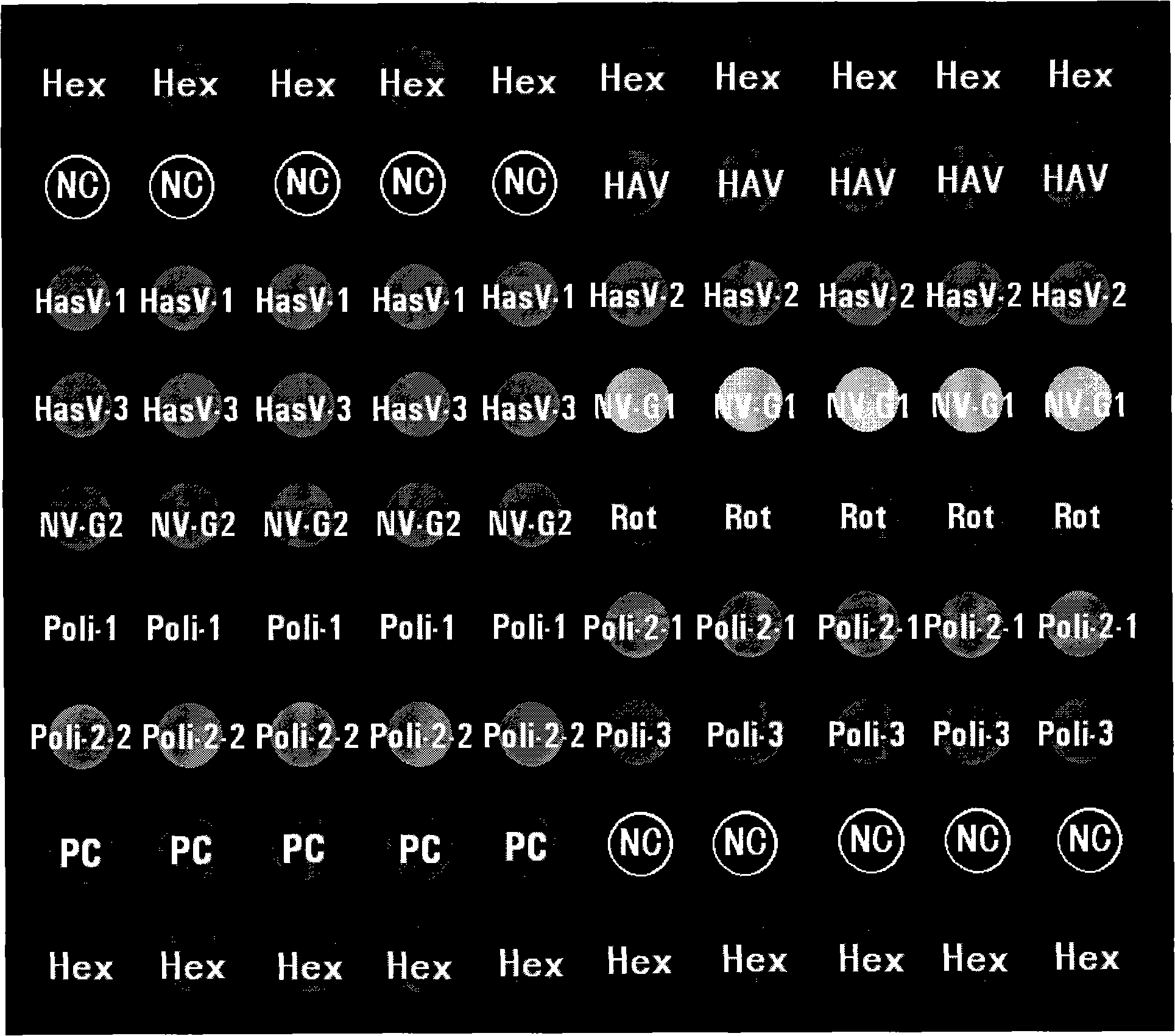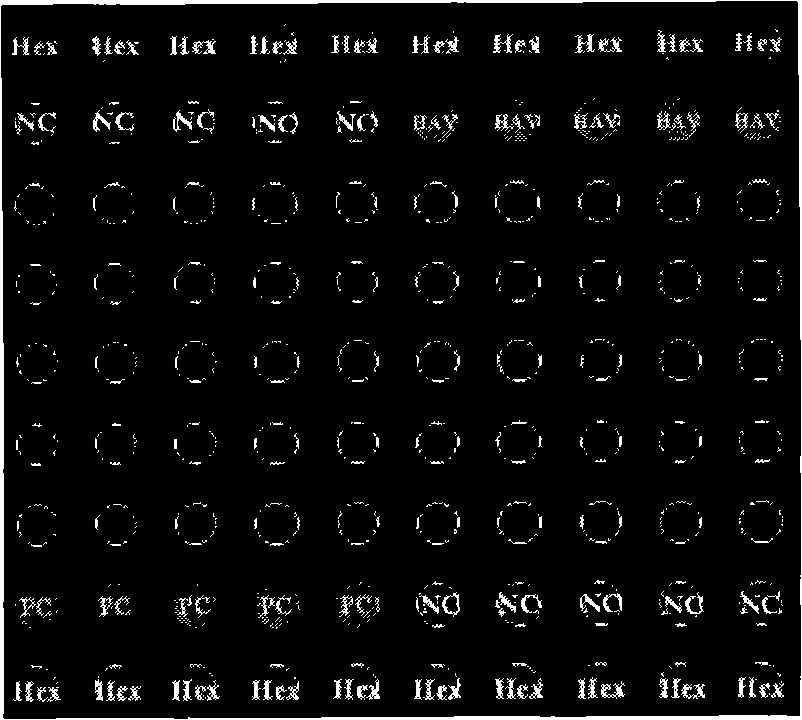Gene chip and reagent box for detecting food-borne virus
A gene chip and food-borne technology, applied in the field of gene chips and kits for detecting food-borne viruses, can solve problems such as unsuitable for virus detection, low virus content, difficulty in cultivating and separating food-borne viruses, etc.
- Summary
- Abstract
- Description
- Claims
- Application Information
AI Technical Summary
Problems solved by technology
Method used
Image
Examples
Embodiment 1
[0067] Example 1: Preparation of gene chip
[0068] 1. Materials and methods
[0069] 1. Materials
[0070] Entrusted Yingjun Biotechnology Co., Ltd. to synthesize probes. In order to make the probe molecules stretch out on the chip and facilitate the hybridization of target probes, an amino group and 15 amino groups were added to the 5' of each probe during synthesis. T.
[0071] Substrate: Aldehyde glass substrate, Beijing Boao Biochip Co., Ltd.
[0072] Crystal core SmartArrayer TM 48 Microarray Chip Spotting System, Boao Biological Co., Ltd.
[0073] 2. Method
[0074] 1. Probe Design and Synthesis
[0075] Collect the virus genes to be tested published by GenBank, find out the conserved segments through homology comparison, and then calculate the conserved segments of these viruses with strict and uniform conditions (Tm value, GC content, secondary structure, etc.) The probes are modified with amino groups at the 5' end, see Table 1. The detection probe has the...
Embodiment 2
[0081] Embodiment 2: detection method
[0082] 1. Materials
[0083] 1. The positive samples of hepatitis A virus and poliovirus were from commercially available vaccines.
[0084] 2. Norovirus type II, astrovirus and rotavirus samples were obtained from Beijing Children's Hospital, and were isolated from 16 stool samples of infants.
[0085] 2. Method
[0086] 1. Extract the total RNA of the sample to be tested by a conventional method (TRIzol method).
[0087] 2. RT-PCR of RNA
[0088] (1) See Table 2 for primer sequences.
[0089] Table 2: Primer sequences
[0090]
[0091]
[0092] (2) Reverse transcription, reaction system and conditions:
[0093] Table 3: Reverse transcription reaction system
[0094]
[0095] 3. PCR amplification:
[0096] Design specific primers according to the viral sequence, and use the cDNA generated by reverse transcription as a template for PCR amplification. The system is shown in Table 4 and the conditions are shown in Table 5. ...
Embodiment 3
[0116] Example 3: Chip detection specificity verification
[0117] 1. Hepatitis A virus positive samples
[0118] 1. Extracting total viral RNA, see Example 2 for specific methods.
[0119] 2. Reverse transcription, reaction system and conditions are the same as Table 3:
[0120] HAV-R (5mM) sequence is CCCAATCGAATCTGAAGCAT SEQ ID No.14
[0121] 3. PCR amplification: Perform PCR amplification using cDNA as a template, the system is the same as in Table 4, and the conditions are as in Table 5:
[0122] HAV-F (unmarked 5uM) sequence is TGTGCTATGGTTCCTGGTGA SEQ ID No.15
[0123] HAV-R (fluorescent label 40uM) sequence is CCCAATCGAATCTGAAGCAT SEQ ID No.14
[0124] 4. Agarose gel electrophoresis, if there are obvious bands detected, it proves that there is amplification;
[0125] 5. Hybridization reaction, see Example 2.
[0126] 6. Chip cleaning, see Example 2.
[0127] 7. Chip scanning results: see Figure 3-1 and 3-2 , The actual experimental results of Hepatitis A vacc...
PUM
 Login to View More
Login to View More Abstract
Description
Claims
Application Information
 Login to View More
Login to View More - R&D
- Intellectual Property
- Life Sciences
- Materials
- Tech Scout
- Unparalleled Data Quality
- Higher Quality Content
- 60% Fewer Hallucinations
Browse by: Latest US Patents, China's latest patents, Technical Efficacy Thesaurus, Application Domain, Technology Topic, Popular Technical Reports.
© 2025 PatSnap. All rights reserved.Legal|Privacy policy|Modern Slavery Act Transparency Statement|Sitemap|About US| Contact US: help@patsnap.com



